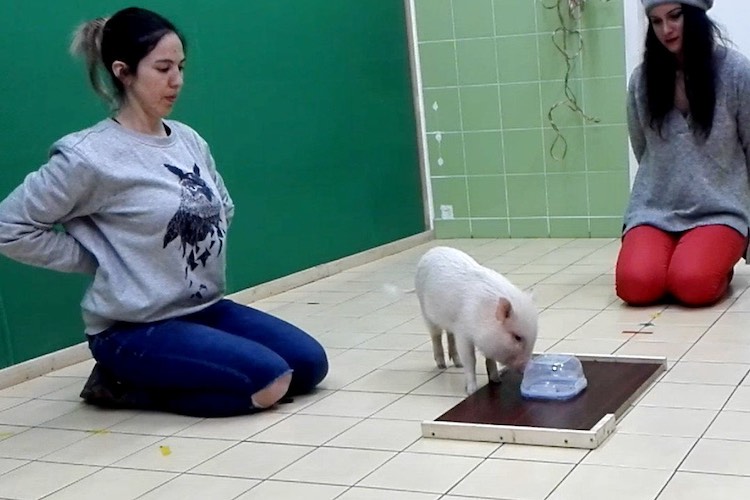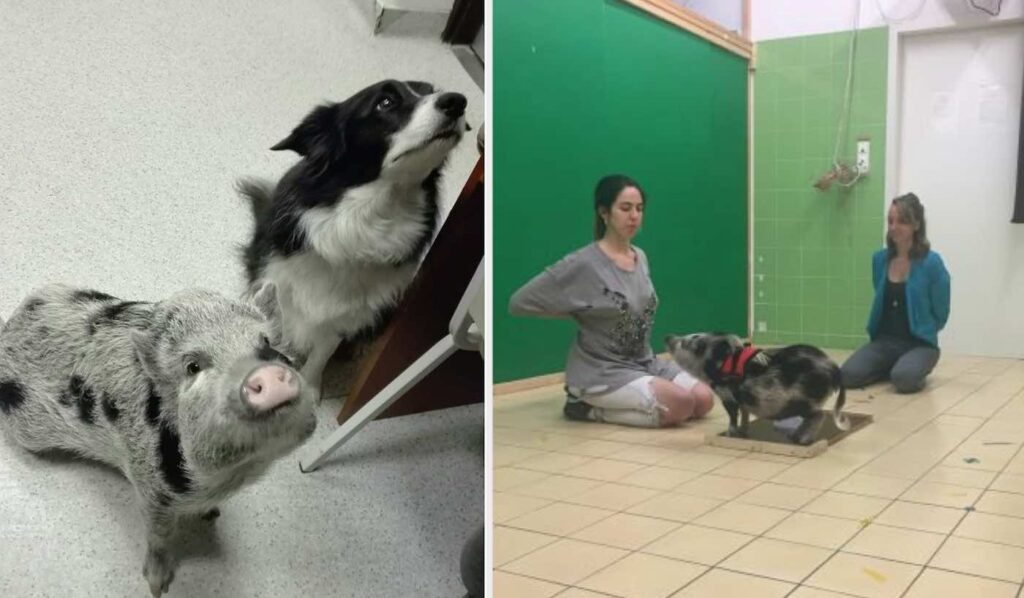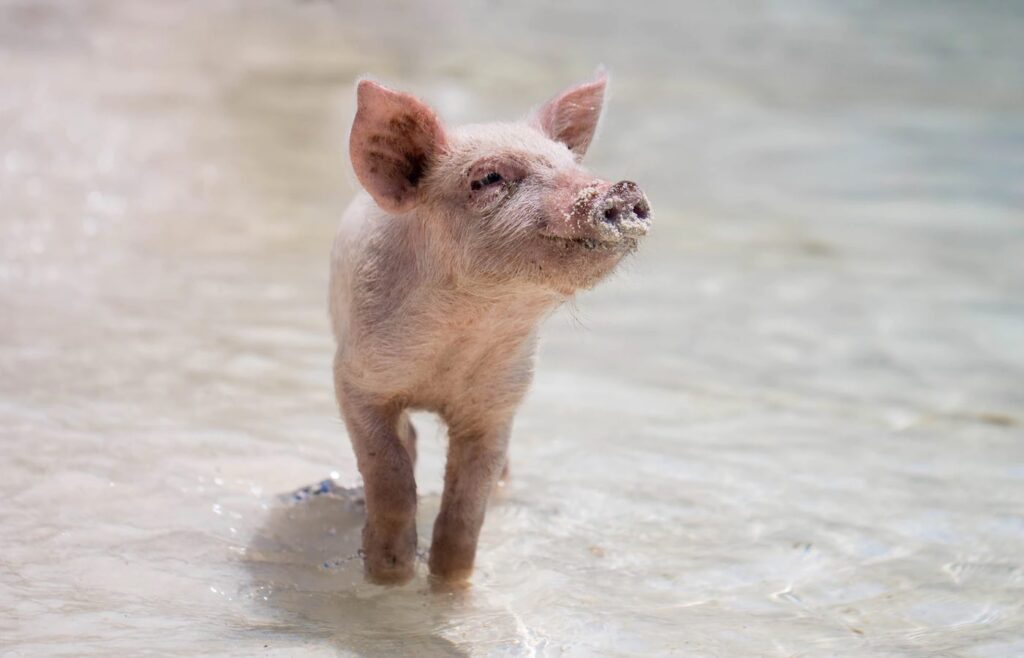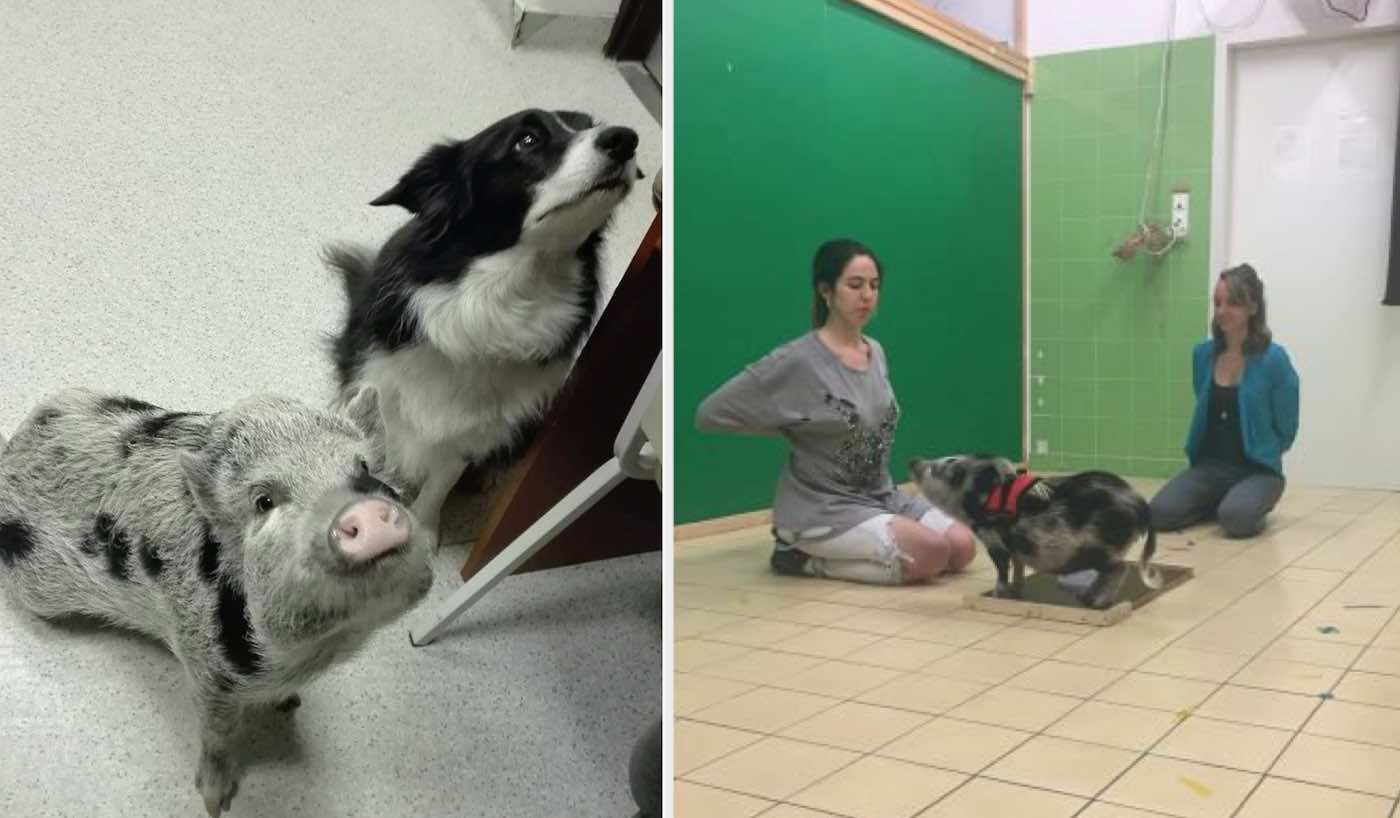Dogs may be considered man’s best friend, but new research says that pigs actually rival other pets in their adoration of human companionship.

Miniature pigs became popularized as pets when the public began seeing them living in homes with celebrities, such as Miley Cyrus, David Beckham, Paris Hilton, and George Clooney—whose pet pig Max lived for 18 years.
According to Hungarian researchers from Eotvos Lorand University in Budapest, pigs are as trainable as dogs, and—unless they have a problem to solve—turn to us for support in the same way that canine companions do.
“The similarities we found between the two species point to their similar capacities for engaging in communicative interactions with humans,” said animal behavior expert Paula Perez Fraga who worked on the studies.
The Family Pig Project was launched in 2017 at the Department of Ethology in Budapest. The animals were raised in a similar environment as family dogs from as early as 6-8 weeks of age, which provides the basis for unique comparative investigations between these two species.
“Dogs, already as puppies, are known to be uniquely skillful in communicating with us, even without any specific training,” added the study’s lead author Dr. Linda Gerencser. “We were curious whether family pigs also exhibit similar communicative signals as dogs, and whether they spontaneously rely on human cues.”
The animals were observed behaving with an experimenter without the presence of food and also after they had been fed. Perez Fraga, a PhD student, explained: “In the presence of food, both pigs and dogs oriented more towards the experimenter—they touched her more often and looked at her face more frequently.
“As an interesting difference, though, only dogs looked up at the human face when they did not expect to receive any food.”

RELATED: Watch Humpback Whales Herd Salmon With Their Fins in Never-Before-Filmed Feeding Behavior
In a second test, the animals were allowed to choose between two hiding locations several different times. The experimenter always pointed at the one that contained the hidden piece of food.
“Without having been trained for this, only dogs followed the pointing, pigs did not,” said Perez Fraga. “Pigs did not choose randomly either, but they rather followed a side-preference strategy, going to the same hiding location over and over again.”
She said dogs are known to look at humans in a problem-solving context to establish joint attention and initiate communicative interactions from an early age.
CHECK OUT: Belgian Man Strikes Up Friendship With Owl Family After They Discover Mutual Love of Television
Perez Fraga and colleagues wanted to find out if this is their speciality or whether other companion animals do the same.
“Similarly socialized wolves and cats communicate less with humans than dogs in the same problem-solving context, but maybe it is because wolves are not domesticated, and cats are not a social species,” said Perez Fraga. “So we designed a study to compare dogs’ behavior with that of another domestic and social species: the pig.”
Pigs, which are renowned for their intelligence and cleanliness, can live up to 20 years. They can also quickly become loving companions and get along with cats. Some fans of these porcine friends have even claimed they are more suited to being kept as domestic animals than dogs.

Perez Fraga said “species-specific predispositions” might be responsible for the found differences. “Dogs are naturally more dependent on and co-operative with humans. This explains their unique success in interacting with us,” she added.
The study, which was published in Animal Cognition earlier this month, is the first to analyze similarities and differences in family dogs’ and pigs’ interactions with humans.
WATCH: This Diligent Dog Has Been Delivering Groceries, Meals, and Mail to Senior Neighbor in Quarantine
“We used the so called ‘Unsolvable task paradigm’ where the animal first faces a problem that he can solve, in our case an easy-to-open box with food inside,” said Perez Fraga. “After some trials, the problem becomes unsolvable because the box is securely closed.”
“When the box was first in the room without food in it, pigs and dogs performed similar human-oriented behaviors,” said Dr. Gerencser. “The differences appeared when we put food in the box and opening it became an exciting challenge.
“Pigs were faster than dogs already in solving the task and getting the reward, perhaps due to their better manipulative capacities. Then, when the task became unsolvable, dogs turned to the humans more than before.
MORE: Videos Capture Penguins Going On Adorable ‘Field Trip’ Around Their Aquarium During Shutdowns
“In contrast, pigs performed less human-oriented behaviors, but they were more persistent than dogs in trying to solve the task, which may reflect their predisposition to solving problems independently.”
Dr. Gerencser said the extent of the behavioral similarities—which are the result of environmental effects such as learning by experience—still needs further investigations.
“We think the primary difference between pigs and dogs lies in the fact the natural salience of the human as a social stimulus for dogs can facilitate learning about communicative cues even without specific training.
“Furthermore, our results are also informative with regard to the potentials of involving miniature pigs in comparative ethological research.”
That’s Some Fine Pig! Be Sure And Share The Sweet Scientific Story With Your Friends On Social Media…





















Pigs are great pets so i heard for a while.